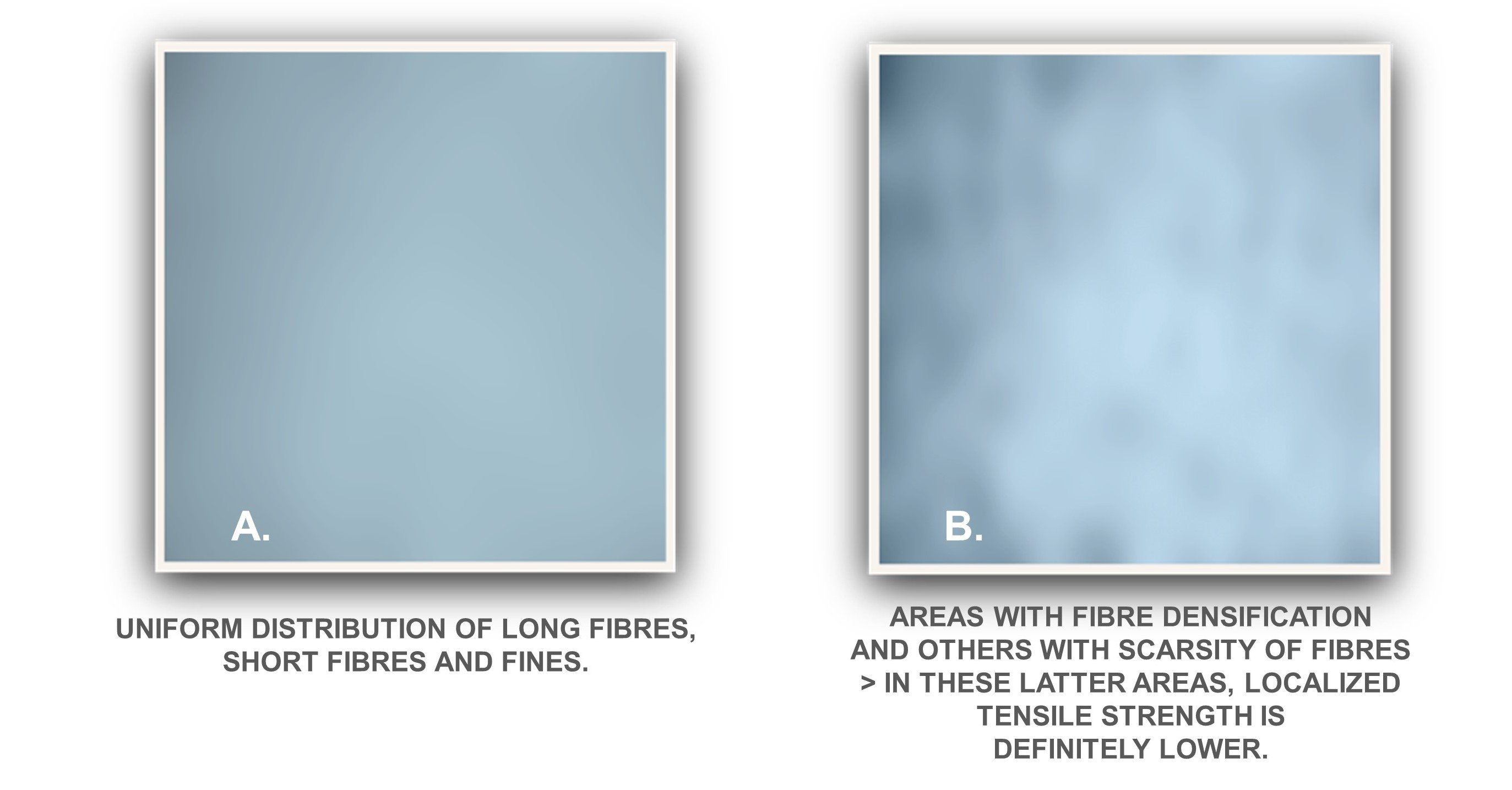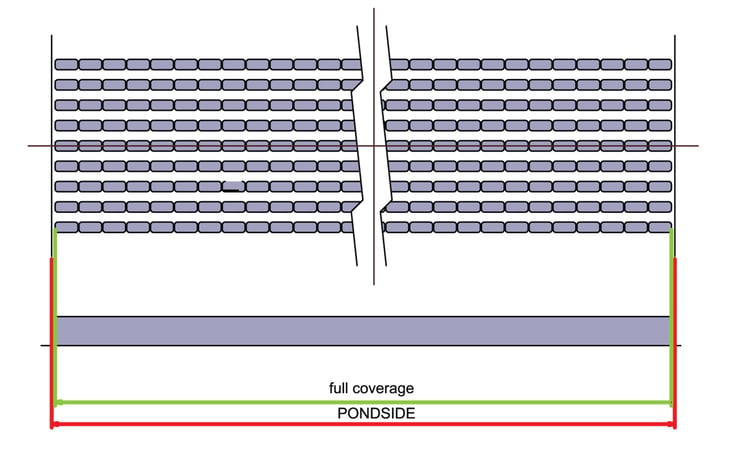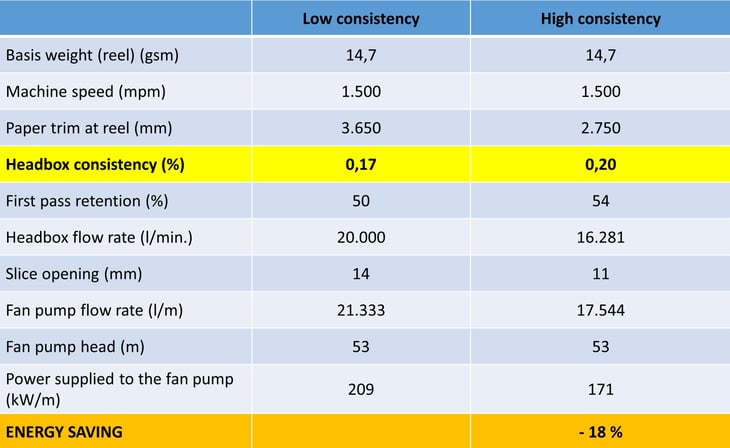[UPDATED ON NOVEMBER 2024]
The headbox can be considered the real heart of the tissue machine and the component that most influences the characteristics of the sheet obtained at the end of the production process. So what are the indispensable requirements that a headbox must have to achieve an excellent sheet formation while reducing energy consumption?
To achieve these objectives, the main tasks that a headbox must perform are:
- Ensure a uniform distribution of the fibrous suspension over the entire width of the machine, so that the same amount of stock always flows in each point of the forming wire
- Ensuring that the fibrous jet lands on the forming wire in a specific area, with the right angle and with a defined speed differential with respect to the forming wire itself.
- Avoid the formation of directional currents in the liquid mass, to prevent the generation of inhomogeneity between the various areas in a transverse direction with respect to the machine direction
- Avoid the formation of fiber flocs by means of a controlled microturbulence
Having said that, let's analyze how the quality of the headbox can affect energy consumption.
Headbox and energy consumption
As regards the sheet formation, it is important to emphasize the relationship between the density of the stock and the formation itself. In case of high density of fibers in suspension, i.e. in the presence of a poorly diluted stock, the fibers are very close together and tend to aggregate forming flocs, thus negatively affecting the quality of the sheet formation.

To avoid this inconvenience, the conventional solution is to increase the dilution of the stock entering the headbox, in order to decrease the density of the fibers and thus keep them separate from each other. This option, however, involves an increase in the flow that the fan pump must supply and this, correspondingly, leads to a higher energy consumption, since the pumping power is directly proportional to the flow.
Luckily, there is an alternative solution: equip yourself with a headbox capable of developing microturbulence such as to avoid, or at least limit, the formation of flocs within the feed flow.
The A.Celli hydraulic headbox has been designed precisely for this purpose: to obtain excellent sheet formation at high concentrations and, at the same time, reduce the energy consumption of the production process.
Headbox and energy consumption
What distinguishes the A.Celli hydraulic headbox from other solutions on the market lies in the optimization of the tube bank design and in the construction of the converging chamber.
Thanks to the use of tubes with three passage sections, i.e. starting from a circular geometry of small diameter and ending with a larger rectangular section, it will be possible to obtain the micro-dispersion of the fibers through the rapid expansion of the passage section and, therefore, a practically perfect coverage of the output section. The distance between two flows coming out of the tube bank is, in fact, determined only by the double wall formed by two adjacent tubes. This design is the best solution from a fluid dynamic point of view, as the elimination of any dead point in which the fibers can settle and form flocs will allow to obtain a sheet formation of the highest possible quality.

Furthermore, the reduced height of the tube bank has led to a significant reduction in the dimensions of the terminal chamber, allowing it to get closer to the wire section and drastically reducing the free jet length, with significant improvements as far as it concerns the stability, the sheet formation and the separation of the layers, as well as a reduction of the air pulled by the convergence between wire and felt.
Finally, the A.Celli hydraulic headbox uses divider sheets, anchored in the appropriate spaces existing between two superimposed rows of nozzles, designed to separate the different channels of the tube bank along the converging part of the headbox up to the point of release of the jet on the forming wire. The purpose of creating these converging channels is to reduce the turbulence scale and to induce in the flow the microturbolence necessary to prevent the formation of fiber flocs, and all this thanks to the progressive reduction of the channels dimensions as the jet is directed towards the sheet formation zone (with the same speed a narrower channel creates more microturbolence).
Macroturbulence - low quality sheet formation
Microturbulence - high quality sheet formation
Test results
Various tests were carried out on running machines equipped with the A.Celli headbox, simultaneously measuring the sheet formation index and the power absorption of the fan pump. From the energy consumption point of view the results obtained, summarized in the table below, show an effective saving of 18% for a basis weight equal to 14.7 gsm.
 As for the sheet formation, this was measured using the Paprican Micro-Scanner. Recalling that the method used assigns an index proportional to the quality of the formation obtained (the higher the value, the better the formation), no significant differences were observed by increasing the consistency in the headbox. In fact, excellent results were obtained both on heavy basis weights (21 -23 gsm) and, in particular, on lighter basis weights (14 -15 gsm), maintaining values well above the performance required by the end customer, who specified a formation index of 140 for both basis weights.
As for the sheet formation, this was measured using the Paprican Micro-Scanner. Recalling that the method used assigns an index proportional to the quality of the formation obtained (the higher the value, the better the formation), no significant differences were observed by increasing the consistency in the headbox. In fact, excellent results were obtained both on heavy basis weights (21 -23 gsm) and, in particular, on lighter basis weights (14 -15 gsm), maintaining values well above the performance required by the end customer, who specified a formation index of 140 for both basis weights.
 If your goal is therefore to obtain an excellent sheet formation and, at the same time, reduce the consumption related to a highly energy-intensive component such as the fan pump, look no further: the A. Celli headbox is the right solution for you.
If your goal is therefore to obtain an excellent sheet formation and, at the same time, reduce the consumption related to a highly energy-intensive component such as the fan pump, look no further: the A. Celli headbox is the right solution for you.
For more informations on how to reduce the energy consumption of your Tissue plant, download our free eBook!

